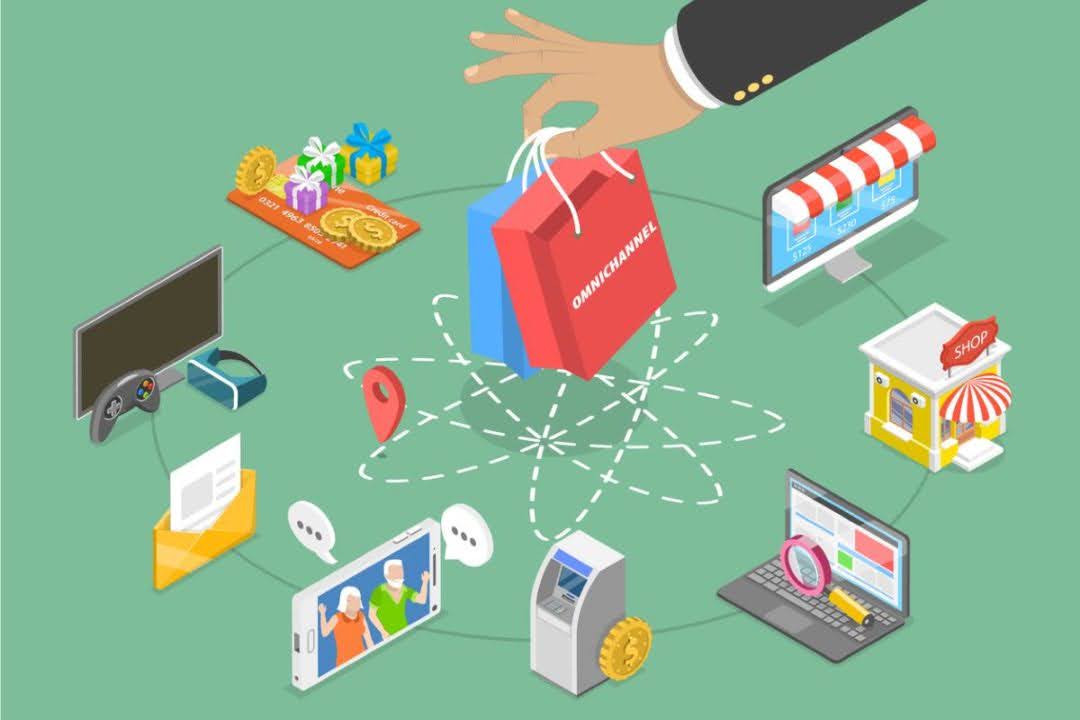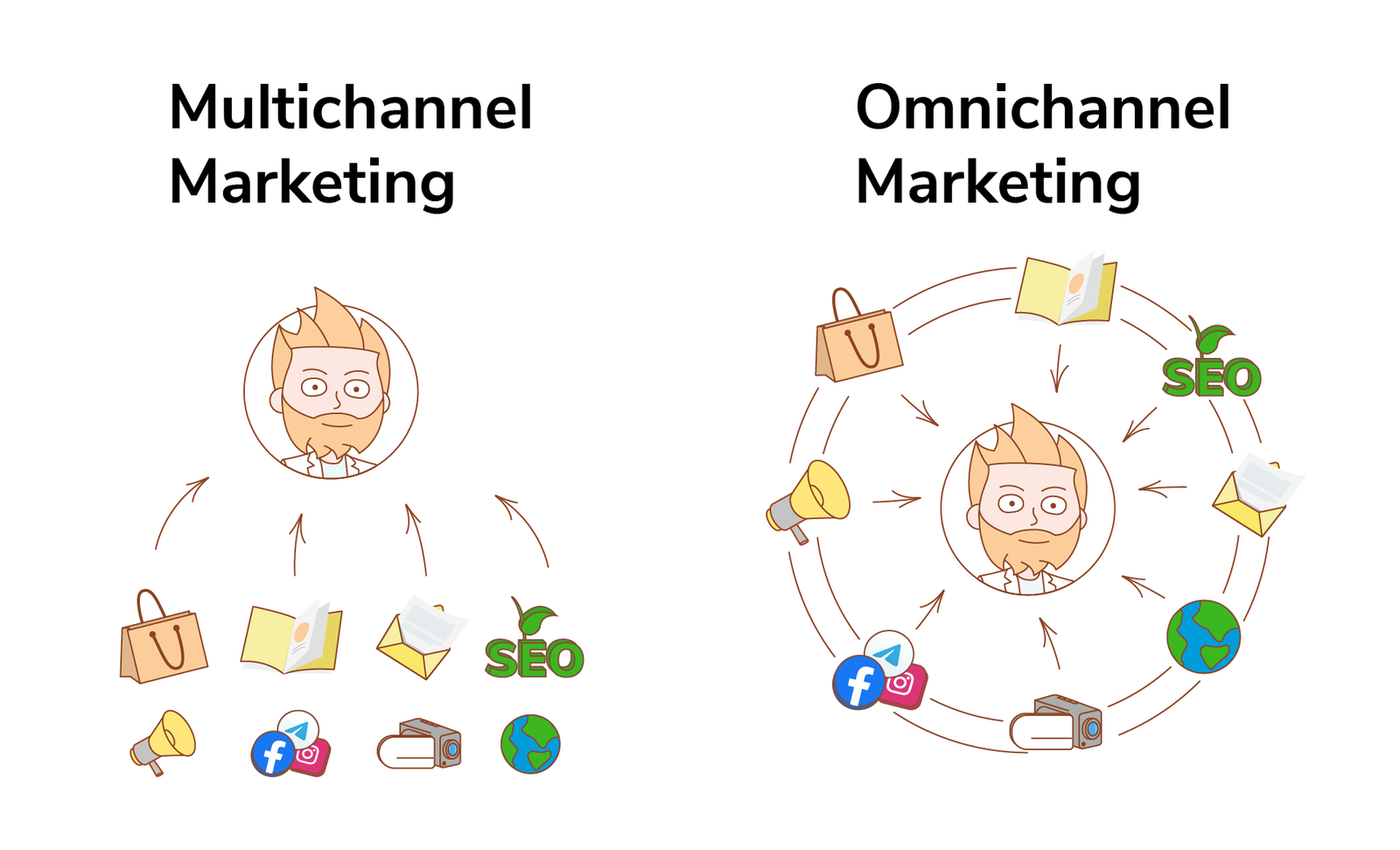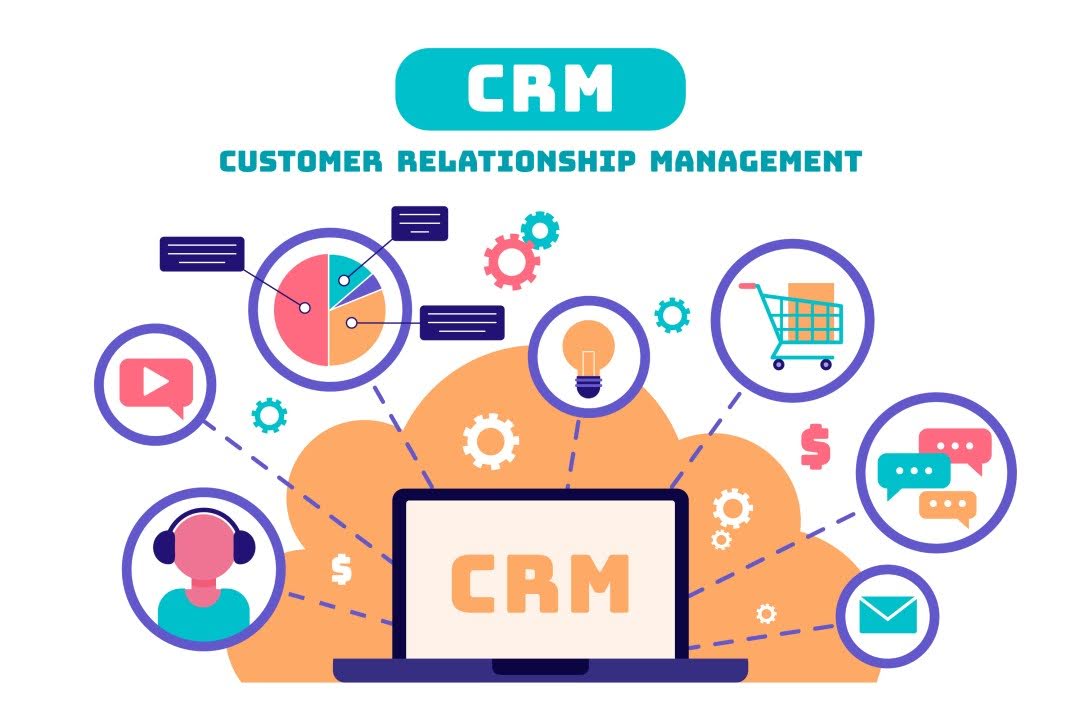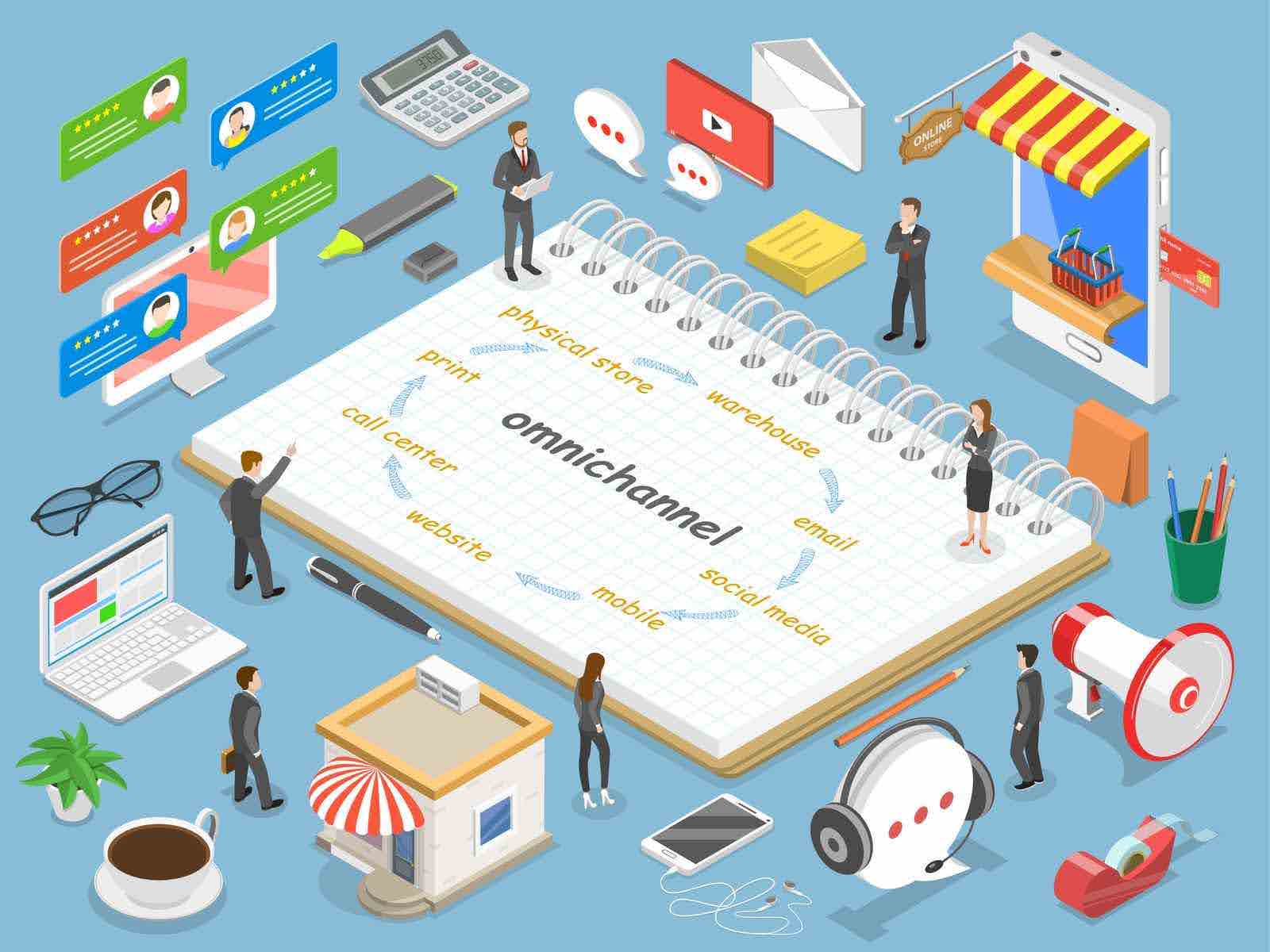In the ever-evolving landscape of eCommerce, the concept of omnichannel marketing has emerged as a critical strategy for businesses aiming to thrive. At its core, omnichannel marketing is all about creating a seamless and integrated shopping experience for customers across all channels and touchpoints. Whether they’re browsing online from a desktop, exploring an app on a smartphone, or walking into a brick-and-mortar store, the goal of omnichannel marketing is to ensure that the customer journey is consistent, personalized, and engaging. The backbone of this strategy is technology – advanced tools and platforms that enable businesses to collect, analyze, and act on vast amounts of customer data. This data-driven insight allows for the creation of personalized experiences, targeted communications, and timely engagements, which are all pivotal in building loyalty and driving sales.
This blog post will delve deep into the world of omnichannel marketing, shedding light on its foundational principles, the technologies that empower it, and the strategies that businesses can employ to achieve omnichannel success. By the end of this comprehensive exploration, you’ll have a complete understanding of omnichannel marketing and the strategic considerations vital to its execution. Whether you’re just starting to weave together your online and offline efforts or looking to refine an existing omnichannel strategy, this post will provide the knowledge and inspiration needed to elevate your eCommerce success.
Table of Contents
- What is Omnichannel Marketing?
- The Fundamentals of Omnichannel Marketing
- Omnichannel vs. Multichannel Marketing: Understanding the Differences
- Building an Omnichannel Marketing Strategy
- Key Technologies and Tools for Omnichannel Marketing
- Challenges in Implementing an Omnichannel Marketing Strategy
- Best Practices for Effective Omnichannel Marketing
- Future Trends in Omnichannel Marketing
What is Omnichannel Marketing?
Omnichannel marketing represents the zenith of digital and traditional marketing strategies, harmoniously integrated to deliver a unified customer experience. Unlike strategies that treat channels as separate silos, omnichannel marketing recognizes that today’s consumers move fluidly between online and offline touchpoints.

Omnichannel marketing focuses on the inclusion and integration of platforms into marketing, so that businesses can reach customers from multiple channels while maintaining brand consistency. This approach aims to make the transition seamless, ensuring that the message, branding, and experience are consistent, no matter how or where a customer interacts with the brand.
Definition of Omnichannel Marketing
Omnichannel marketing is a customer-centric strategy that focuses on building a cohesive user experience across multiple channels and platforms, including online (websites, email, social media, mobile apps) and offline (physical stores, events, call centers). It leverages data analytics to understand customer behaviors and preferences, enabling personalized engagement at every touchpoint. The ultimate goal is to foster strong relationships with customers, leading to enhanced loyalty and increased sales.

The omnichannel marketing approach is built on the foundation of integration. It requires a deep understanding of the customer journey, from the first interaction to post-purchase support, ensuring that each step is connected and contributes to a holistic brand experience. This strategy demands not only the alignment of marketing messages across channels but also the synchronization of backend systems and operations. It’s about delivering the right message, at the right time, through the right channel, but with a level of personalization and convenience that exceeds customer expectations.
Evolution from Multichannel to Omnichannel Marketing
To appreciate the essence of omnichannel marketing, it’s crucial to understand its evolution from multichannel marketing. Initially, businesses aimed to increase their reach by establishing a presence on multiple platforms, a strategy known as multichannel marketing. While this approach diversified the customer engagement points, it often led to disjointed experiences. Each channel operated in isolation, with little to no integration of messaging, objectives, or data analytics. As a result, the customer journey could feel fragmented, with inconsistent branding and communication across different platforms.

The shift towards omnichannel marketing emerged from the recognition of these shortcomings and the changing expectations of consumers. As digital technology advanced, so did the desire for more integrated and personalized shopping experiences. Customers began to seek not just variety in how they could interact with brands, but also consistency and understanding across all channels. They wanted their interactions on one platform to be recognized and acted upon across others, demanding a more connected and intuitive experience.
Omnichannel marketing arose as a response to these consumer demands, emphasizing the importance of a seamless, integrated customer journey. It reflects a holistic view of the customer experience, where every interaction is seen as part of a continuous relationship, rather than isolated engagements. This evolution marks a significant shift in marketing philosophy, from a focus on the brand’s presence across channels to a focus on the customer’s experience through those channels.

The transition from multichannel to omnichannel marketing represents a profound change in how businesses engage with their customers. It’s a move towards a more integrated, coherent, and customer-focused approach, leveraging the power of technology to create experiences that are not just seamless, but also deeply personalized and responsive to the individual needs and preferences of each customer. In the age of digital transformation, omnichannel marketing has become not just a competitive advantage, but a necessity for brands looking to thrive in a crowded and ever-changing marketplace.
The Fundamentals of Omnichannel Marketing
The shift towards omnichannel marketing signifies a radical reimagining of how businesses approach their relationship with customers. This strategy hinges on a nuanced understanding of the customer’s journey, ensuring every interaction is not only consistent and personalized but also seamlessly integrated across all channels. At its heart, omnichannel marketing is about crafting experiences that resonate with the customer, making their path to purchase and beyond as smooth and engaging as possible.
The Customer’s Journey in the Omnichannel Marketing Strategy
In the context of omnichannel marketing, the customer’s journey is viewed as a holistic narrative that unfolds across various stages and touchpoints. This journey encompasses everything from initial awareness and consideration to purchase and loyalty, with the understanding that at each stage, a customer may interact with the brand through different channels. An omnichannel approach seeks to map this journey in its entirety, identifying key moments where targeted engagement can enhance the customer’s experience. The aim is to be there for the customer at every step, providing relevant information and support that guides them towards a decision.

The customer journey is not linear; it is a multi-layered narrative that varies significantly from one customer to another, reflecting the diverse ways in which individuals engage with a brand. From the moment a customer becomes aware of a brand (awareness) to the time they consider making a purchase (consideration), followed by the act of purchasing (conversion), and finally, evolving into a loyal advocate for the brand (loyalty), each phase is as critical as the next.
Initial Awareness
At the onset of the journey, a potential customer might encounter the brand through various channels such as social media ads, word of mouth, or even directly on a website. In an omnichannel strategy, the brand’s message across these platforms is unified and compelling, designed to spark interest and invite the customer into the narrative. This phase is crucial for making a strong first impression that resonates with the customer’s needs and interests.
Consideration
As the customer moves into the consideration phase, they begin to explore their options more deeply. Here, they may visit comparison sites, read reviews, and engage with the brand through different touchpoints, such as newsletters, blog posts, or interactive tools. An omnichannel approach ensures that at each of these touchpoints, the information provided is consistent, detailed, and tailored to where the customer is in their journey, helping them to make an informed decision.
Purchase
The purchase stage is where the effectiveness of an omnichannel strategy truly shines. Whether the customer chooses to buy online, through a mobile app, or in a physical store, the experience should be seamless and frictionless. Inventory information, pricing, and promotional offers need to be synchronized across channels. Additionally, the purchase process itself should be straightforward, reinforcing the customer’s decision to choose this brand over others.
Loyalty
Post-purchase, the journey is far from over. The loyalty phase is about nurturing the relationship with the customer, encouraging repeat purchases, and ultimately, turning them into brand advocates. This is achieved through personalized follow-ups, exclusive offers, and engaging content that resonates with their past behavior and preferences. An omnichannel strategy leverages data from previous interactions to tailor these communications, ensuring that each customer feels valued and understood.
The Role of Targeted Engagement
Throughout this journey, targeted engagement acts as the guideposts that lead customers towards their final destination – a successful purchase and beyond. By identifying key moments for engagement – be it offering a personalized recommendation based on browsing history, a timely customer service interaction on social media, or a gentle nudge via an abandoned cart email – brands can significantly enhance the customer’s experience. Each of these moments is an opportunity to build trust, demonstrate value, and cement the relationship.
In essence, the customer’s journey in an omnichannel marketing approach is about recognizing and responding to the fluid and dynamic nature of customer behavior across channels. By mapping this journey and understanding the various stages and touchpoints, brands can craft experiences that not only meet but exceed customer expectations. The ultimate aim is to be a constant, supportive presence in the customer’s narrative, guiding them with relevance and care towards a decision that feels both satisfying and personal.
Key Components of Omnichannel Marketing
The adoption of an omnichannel strategy is a transformative journey for any business, requiring a nuanced understanding and implementation of its three pillars: consistency, personalization, and integration. These components form the backbone of a superior customer experience, ensuring that a brand not only meets but exceeds the evolving expectations of its customers.
Consistency
Consistency ensures that the brand’s message, tone, and visual identity remain uniform across all channels. This coherence builds trust and recognition, making it easier for customers to move between platforms without feeling disoriented. Whether it’s in-store signage, social media content, or email campaigns, customers should always feel like they’re interacting with the same brand.
Consistency in omnichannel marketing is about delivering a uniform brand experience, regardless of the channel or platform. This consistency spans across message, tone, and visual identity, ensuring that whether a customer interacts with the brand through a digital ad, a physical store, or a customer service call, they receive the same core message and brand feel. This coherence is crucial in building trust and brand recognition, two elements that significantly influence customer loyalty and purchasing decisions.

Achieving such consistency requires meticulous planning and coordination across all facets of the business. It involves aligning marketing campaigns, product information, customer service protocols, and even the aesthetic elements of branding to present a unified front. For example, the messaging and promotions offered online should reflect those in physical stores, and the visual layout of an email campaign should echo the brand’s social media presence. This level of uniformity helps in creating a seamless brand narrative that customers can easily follow and engage with, eliminating confusion and reinforcing their confidence in the brand.
Personalization
Personalization goes beyond simply addressing the customer by name. It involves tailoring the shopping experience to each individual’s preferences, behaviors, and past interactions with the brand. By leveraging data to understand what each customer values, businesses can deliver more relevant content, recommendations, and offers that resonate on a personal level.
Personalization in omnichannel marketing takes the customer experience to a deeper, more individual level. It’s about recognizing and responding to the unique preferences and behaviors of each customer, creating a shopping experience that feels tailored just for them. This could mean recommending products based on past purchases, customizing email marketing content based on browsing behavior, or offering targeted promotions that align with individual customer interests.

The key to effective personalization is data. By collecting and analyzing data from various touchpoints, businesses can gain insights into the needs, preferences, and behaviors of their customers. This data then informs content creation, product recommendations, and personalized messaging, ensuring that each interaction feels relevant and valuable to the customer. Such personalized engagement not only enhances the customer experience but also drives conversion rates and fosters loyalty by making customers feel understood and valued by the brand.
Integration
Integration is what ties all the channels together, allowing for a seamless transition from one platform to another. This requires not only technological solutions, such as a unified customer relationship management (CRM) system but also organizational alignment to ensure all departments are working towards the same customer-centric goals. Integration ensures that customer data flows freely between channels, enabling a cohesive and responsive engagement strategy.
Integration is arguably the most technical yet most critical component of an omnichannel marketing strategy. It involves knitting together various channels and platforms so that they function as a cohesive unit, providing a smooth and uninterrupted customer journey. At the heart of this integration is technology – specifically, systems like a unified CRM that can track and manage customer interactions across channels, ensuring that data is shared and accessible throughout the organization.

But integration extends beyond just technology. It also requires organizational alignment, where all departments – from marketing and sales to customer service and IT – work in concert towards a shared, customer-centric goal. This alignment ensures that customer data and insights flow seamlessly across the organization, enabling a coordinated and responsive approach to customer engagement. Integration allows for real-time updates and interactions, ensuring that a customer who adds a product to their online cart can receive related assistance in-store, or that an inquiry made via social media can be addressed through email follow-up, creating a truly unified customer experience.
The Role of Data and Analytics in Omnichannel Marketing
Central to the success of an omnichannel marketing strategy is the effective use of data and analytics. These tools provide insights into customer behavior, preferences, and engagement patterns, enabling businesses to make informed decisions about how to best serve their audience. By analyzing data collected from various touchpoints, companies can identify trends, predict needs, and personalize interactions in real-time. This data-driven approach not only enhances the customer experience but also optimizes marketing efforts, ensuring resources are focused on the activities that generate the most value.

Data and analytics also play a pivotal role in measuring the effectiveness of omnichannel strategies. Through detailed tracking and analysis, businesses can gauge the impact of their efforts on customer satisfaction, loyalty, and ultimately, sales. This ongoing evaluation allows for continuous improvement, ensuring that the omnichannel experience remains dynamic and responsive to changing customer needs and market conditions.
Omnichannel vs. Multichannel Marketing: Understanding the Differences
In today’s dynamic marketplace, businesses strive to create compelling customer experiences across multiple platforms. This effort has given rise to two predominant strategies: multichannel and omnichannel marketing.

While both approaches aim to engage customers through various channels, their methodologies and end goals significantly differ. Understanding these differences is crucial for businesses looking to adopt a strategy that best aligns with their objectives and customer expectations.
Multichannel Marketing
Multichannel marketing refers to the practice of interacting with customers through multiple independent channels, such as retail stores, websites, social media, email, and mobile apps. The primary goal is to maximize the reach and accessibility of a brand, allowing customers to engage and transact in ways that are most convenient for them.

Some key features of multichannel marketing include:
- Channel Diversity: Multichannel marketing emphasizes the presence of a brand across several platforms, aiming to capture the attention of a broad audience.
- Independent Operations: Channels in a multichannel strategy often operate in silos, with strategies and goals that are specific to each channel. This can lead to a disjointed customer experience, as the integration and data sharing between channels are minimal.
- Customer Reach: The primary focus is on spreading the brand’s message as widely as possible, rather than creating a unified or personalized customer experience. Engagement metrics and sales are typically measured per channel, rather than holistically.
The overarching goal of multichannel marketing is to increase a brand’s reach, making it as accessible as possible to a broad audience. By establishing a presence on multiple platforms, businesses aim to capture the attention of potential customers wherever they may be. Whether a customer prefers browsing in a physical store, scrolling through social media, or shopping online, a multichannel approach ensures that the brand is present and engaging.
While multichannel marketing expands a brand’s visibility, it presents unique challenges, particularly regarding the consistency of the customer experience across different channels. Each channel often operates with its strategies, objectives, and metrics, potentially leading to a fragmented brand image and customer experience if not carefully managed. The key to effective multichannel marketing lies in understanding the unique advantages and limitations of each channel and strategically integrating them into a comprehensive marketing plan.
Omnichannel Marketing
Omnichannel marketing takes the concept of multichannel marketing further by not only engaging customers across multiple platforms but also ensuring a seamless, integrated experience across all channels. This strategy acknowledges that today’s consumers often switch between channels in their purchasing journey and seeks to provide a cohesive brand experience, regardless of how or where a customer interacts with the brand.

Some key features of omnichannel marketing include:
- Seamless Integration: A hallmark of omnichannel marketing is the seamless connection between channels. Customer data and interactions are shared across platforms, enabling a continuous and consistent experience.
- Customer-Centric Approach: Omnichannel marketing focuses on the customer’s journey and experience, leveraging data to understand and predict customer behavior and preferences. Personalization is key, with efforts aimed at catering to the individual needs and expectations of customers.
- Unified Measurement and Goals: Success in an omnichannel strategy is measured across all channels as a unified whole. The performance of individual channels is considered in the context of their contribution to the overall customer experience and journey, rather than in isolation.
The cornerstone of omnichannel marketing is its focus on creating a seamless experience for the customer. This means that whether a customer is shopping online from a desktop or mobile device, via a social media platform, or in a physical store, the experience will be consistent and fluid. Information and services flow effortlessly from one channel to another. For example, a customer can check product availability online and pick it up in-store, or receive personalized recommendations on their mobile app based on their shopping history on the website.
Omnichannel marketing is predicated on an in-depth understanding of the modern consumer’s journey, which is no longer a straightforward path but a web of interactions across different channels. Today’s consumers might start their journey by researching a product on their mobile device, continue by reading reviews on a desktop, seek opinions on social media, and finally make a purchase in a physical store—or any other combination of these steps. An omnichannel approach strives to make each of these steps interconnected and complementary, enhancing the customer’s overall experience with the brand.
A key objective of omnichannel marketing is to provide a cohesive brand experience. This requires not only consistency in messaging and visual identity across all channels but also the ability to recognize and respond to the customer’s needs at various points in their journey. For instance, if a customer adds items to a cart on a mobile app but doesn’t complete the purchase, they might receive a reminder email later. If they then visit a physical store, the staff might have access to their online activity to provide personalized assistance. This level of integration ensures that the customer feels valued and understood, regardless of the channel they choose to engage with.
Comparing the Two Approaches
While multichannel marketing can be seen as casting a wide net to capture as many customer interactions as possible, omnichannel marketing is about weaving those interactions into a cohesive narrative. The omnichannel approach recognizes that a customer’s relationship with a brand is a single continuous dialogue, not a series of disconnected conversations. This fundamental shift in perspective – from channel-centric to customer-centric – defines the core difference between multichannel and omnichannel marketing.
In practice, adopting an omnichannel strategy means breaking down the silos that typically separate marketing channels. It involves integrating systems and processes so that customer data flows freely between them, informing a dynamic, responsive, and personalized marketing approach. The result is a brand experience that feels both unified and tailored, significantly enhancing customer satisfaction and loyalty.

Ultimately, the choice between multichannel and omnichannel marketing depends on a company’s goals, resources, and the nature of its customer base. However, as consumer expectations continue to evolve towards more personalized and integrated experiences, the benefits of an omnichannel approach become increasingly compelling. By focusing on the quality of interactions rather than the quantity, businesses can foster deeper connections with their customers, driving long-term loyalty and growth. For many businesses, starting with a multichannel approach and evolving towards omnichannel can be a practical way to progress, especially as customer expectations continue to shift towards more integrated and personalized experiences. Regardless of the choice, staying flexible and responsive to the changing landscape of consumer behavior and technology advancements will be key to success.
Building an Omnichannel Marketing Strategy
In the digital age, where customers interact with brands through a myriad of touchpoints, an omnichannel marketing strategy is no longer a luxury – it’s a necessity. This approach, which integrates various channels to offer a unified customer experience, has become crucial for businesses aiming to meet the evolving expectations of their customers.

Understanding the importance of omnichannel marketing and implementing a strategic plan can significantly enhance customer engagement, satisfaction, and loyalty. Developing a comprehensive omnichannel marketing plan requires careful planning and execution. Below is a step-by-step guide to help you create an effective omnichannel strategy:
Identifying Your Target Audience and Their Preferred Channels
Building an omnichannel marketing plan is an intricate process that demands a deep understanding of your audience, a comprehensive mapping of the customer journey, a strategic content approach, and the adoption of advanced technology for integration and automation. By focusing on these key elements, businesses can create a truly omnichannel experience that meets customers’ expectations for seamless, personalized interactions, driving engagement, loyalty, and growth in today’s competitive market.

The first step in creating an omnichannel marketing plan is to identify and understand your target audience. This involves researching their demographics, interests, behaviors, and preferences. It’s crucial to identify the channels your audience uses most frequently and how they use them. For example, younger demographics might prefer engaging with brands through social media, while professionals may prefer email communications or LinkedIn interactions. Understanding these preferences allows you to tailor your strategy to meet your audience where they are.
Mapping the Customer Journey Across All Touchpoints
Once you understand your target audience, the next step is to map out the customer journey, identifying all potential touchpoints where customers may interact with your brand. This includes digital channels like your website, social media, email, and mobile apps, as well as physical touchpoints such as in-store visits or events. Mapping the customer journey helps you understand the path customers take from awareness to purchase and beyond, highlighting opportunities for engagement and personalization at each stage.
Content Strategy for Seamless Experience
Creating content that resonates with your audience at different stages of their journey is critical for a seamless omnichannel experience. Your content strategy should ensure that messaging is consistent across all channels but also tailored to the specific context of each channel. For example, social media posts might be more casual and engaging, while email content could be more informative and personalized. The key is to maintain a unified brand voice and message while adapting the content to suit the medium and the audience’s expectations at each touchpoint.
Key Technologies and Tools for Omnichannel Marketing
The implementation of an effective omnichannel marketing strategy relies heavily on the integration of various technologies and tools. These solutions not only enable businesses to deliver a seamless customer experience across all channels but also provide the data and insights needed to continuously optimize marketing efforts. From Customer Relationship Management (CRM) systems to emerging technologies like Artificial Intelligence (AI) and Augmented Reality (AR), the landscape of tools available for omnichannel marketing is both broad and diverse. Let’s delve into some of these key technologies and understand their role in enhancing omnichannel marketing strategies.
CRM Systems and Their Role in Omnichannel Marketing
CRM systems stand at the core of successful omnichannel marketing strategies. These systems collect and organize customer data across all touchpoints, providing a comprehensive view of the customer journey. With features like contact management, interaction tracking, and customer segmentation, CRM systems enable businesses to personalize communications and offers, ensuring that every interaction is relevant to the individual customer’s needs and preferences. By centralizing customer data, CRM systems also facilitate better communication and coordination across different departments, ensuring that marketing, sales, and customer service teams are aligned in their efforts to provide a unified customer experience.

One of the primary benefits of CRM systems is their ability to centralize customer data collected from various touchpoints, including in-store transactions, online purchases, social media interactions, and customer service inquiries. This centralized data repository offers businesses a 360-degree view of the customer journey, highlighting each customer’s preferences, purchase history, and interactions with the brand. Such a comprehensive view is indispensable for creating personalized marketing campaigns that resonate with each customer.
CRM systems come equipped with a suite of advanced features designed to segment customers into distinct groups based on their behaviors, preferences, and transaction histories. This segmentation allows businesses to tailor their communications and offers more effectively, ensuring that marketing messages are relevant and appealing to each customer segment. Moreover, CRM systems can track customer interactions in real-time, enabling businesses to adjust their strategies dynamically based on the latest customer data. This level of personalization is crucial for engaging customers in a meaningful way, increasing the likelihood of conversion and fostering long-term loyalty.

The integration of customer data across departments is another critical aspect of CRM systems in omnichannel marketing. By providing a single source of truth for customer information, CRM systems ensure that marketing, sales, and customer service teams are all aligned in their understanding of the customer. This alignment is essential for delivering a consistent and unified customer experience, regardless of the channel or department involved. For instance, if a customer raises an issue on social media, the customer service team can quickly access the customer’s full history and provide a more informed and effective response. Similarly, sales teams can leverage CRM data to identify upselling and cross-selling opportunities based on a customer’s purchase history and preferences.
Ultimately, the power of CRM systems in omnichannel marketing lies in their ability to drive unified customer experiences. By centralizing data and enabling advanced personalization and cross-departmental coordination, CRM systems help businesses deliver a seamless experience to customers at every touchpoint. This seamless experience is key to building trust and loyalty among customers, who increasingly expect brands to recognize and understand their needs across all channels.
Marketing Automation Platforms in Omnichannel Marketing
Marketing automation platforms are essential tools for executing omnichannel marketing strategies efficiently. These platforms automate repetitive tasks such as email marketing, social media posting, and ad campaigns, freeing up time for marketers to focus on strategy and creative content creation. More importantly, marketing automation platforms enable personalized communication at scale. By leveraging customer data from CRM systems, these platforms can trigger targeted messages based on specific customer behaviors or milestones, ensuring that customers receive timely and relevant content through their preferred channels.
The automation of repetitive tasks is one of the key features that make marketing automation platforms so valuable. Tasks such as scheduling email campaigns, posting updates across various social media platforms, and managing ad campaigns can consume a significant amount of a marketer’s time. By automating these processes, marketing automation platforms free up marketers to focus on higher-level strategy and creative content creation. This shift not only improves productivity but also allows for more thoughtful and innovative marketing approaches that can better engage customers.

Perhaps the most impactful feature of marketing automation platforms is their ability to facilitate personalized communication at scale. Personalization has become a cornerstone of effective marketing, with customers expecting messages that resonate with their individual needs and preferences. By integrating with CRM systems, marketing automation platforms can access a wealth of customer data, including past interactions, purchase history, and behavioral data. This information enables the platforms to segment audiences and trigger targeted messages that are relevant to each segment’s interests and behaviors.
For instance, a customer who recently browsed certain products on a website but didn’t make a purchase might receive an email highlighting those products, along with a special offer to encourage a transaction. Similarly, a customer who frequently engages with content on social media might receive personalized recommendations through those channels. This level of personalization enhances the customer experience, making marketing messages feel more like one-on-one conversations rather than generic blasts.
Marketing automation platforms are particularly effective in optimizing omnichannel campaigns. By ensuring consistent and personalized communication across all channels, these platforms help create a cohesive customer journey. Whether a customer interacts with a brand through email, social media, or another channel, the message remains consistent and relevant, reinforcing the brand’s presence and value proposition at every touchpoint.
Analytics and Data Management Tools in Omnichannel Marketing
Data is the lifeblood of omnichannel marketing, and analytics and data management tools are what make this data actionable. These tools help businesses collect, analyze, and interpret vast amounts of customer data from various sources, providing insights into customer behavior, preferences, and engagement patterns. By understanding which channels and tactics are most effective, businesses can allocate their resources more efficiently and refine their marketing strategies for better results. Additionally, advanced analytics tools can predict future customer behaviors, allowing businesses to proactively tailor their marketing efforts to meet customers’ evolving needs.
The first step in making data actionable is collecting and organizing it efficiently. Analytics and data management tools are adept at aggregating data from a plethora of sources, including online interactions, social media, in-store transactions, and customer service contacts. This comprehensive data collection is crucial for creating a unified view of the customer journey, highlighting how customers move across and interact with different channels. By effectively organizing this data, businesses can ensure that they have a solid foundation upon which to build their analytical efforts.

With vast amounts of data at their disposal, businesses can employ analytics tools to dive deep into customer behavior and preferences. These tools use sophisticated algorithms to identify patterns and trends within the data, revealing insights such as which products are most popular among certain demographics, what times of day customers are most active online, and which marketing messages resonate best with different segments of the audience. Understanding these nuances of customer behavior and preference is essential for tailoring marketing strategies to better match customer expectations.
One of the key benefits of analytics and data management tools is their ability to inform more efficient resource allocation. By identifying which channels and marketing tactics yield the highest engagement and conversion rates, businesses can optimize their spending, focusing their efforts and budgets on the most effective strategies. This not only improves the overall ROI of marketing campaigns but also ensures that resources are not wasted on underperforming channels or messages.

Perhaps one of the most exciting capabilities of advanced analytics tools is their ability to predict future customer behaviors. Through predictive analytics and machine learning, businesses can forecast upcoming trends, anticipate customer needs, and even predict which customers are at risk of churning. This forward-looking approach allows businesses to proactively adjust their marketing efforts, engaging customers with personalized offers and content that meet their evolving needs before they even arise. Predictive analytics can be particularly powerful in an omnichannel context, where anticipating customer movements across channels can lead to more cohesive and engaging experiences.
Ultimately, the insights gained from analytics and data management tools are invaluable for refining and optimizing marketing strategies. Armed with a deep understanding of customer behavior and the performance of various channels, businesses can continuously adjust their omnichannel strategies to improve engagement, enhance customer satisfaction, and drive sales. This iterative process of analysis, insight, and adjustment is critical for staying competitive in a rapidly changing market landscape.
Challenges in Implementing an Omnichannel Marketing Strategy
Implementing an omnichannel marketing strategy offers numerous benefits, including improved customer satisfaction, increased sales, and enhanced brand loyalty. However, transitioning to a truly integrated omnichannel approach is not without its challenges. Businesses often encounter obstacles ranging from data management issues to organizational alignment, all of which must be addressed to successfully deliver a seamless customer experience. Let’s explore some of the key challenges in implementing an omnichannel marketing strategy.
Data Silos and Integration Issues
One of the most significant challenges in omnichannel marketing is overcoming data silos and integration issues. In many organizations, customer data is collected and stored in disparate systems, with different departments (e.g., sales, marketing, customer service) using separate platforms that do not communicate with one another. This fragmentation results in data silos that hinder the creation of a unified view of the customer journey.

Integrating these disparate systems to achieve a seamless flow of data across channels can be technically complex and resource-intensive. Without effective integration, delivering a consistent and personalized customer experience across all touchpoints is nearly impossible.
Maintaining Consistency Across Channels
Achieving consistency across various channels is another major hurdle. This includes ensuring that messaging, branding, and the overall customer experience are coherent whether a customer interacts with the brand via social media, email, website, or in-store.

Maintaining this level of consistency requires a strategic approach to content creation, distribution, and communication, as well as meticulous attention to detail. It also involves regular monitoring and adjustments to ensure that all channels are aligned and contributing to a cohesive brand narrative. Failure to maintain consistency can lead to a disjointed customer experience, undermining trust and loyalty.
Training and Organizational Alignment
The shift to an omnichannel strategy often necessitates significant changes in organizational structure and processes. It requires that all departments, from marketing and sales to customer service and IT, work in close coordination, guided by a shared vision of delivering a unified customer experience. Achieving this level of alignment involves extensive training and education to ensure that every team member understands the omnichannel strategy and their role in its implementation.

Moreover, organizational silos must be broken down to facilitate collaboration and information sharing across departments. This cultural and operational shift can be challenging, requiring strong leadership and a clear commitment to the omnichannel vision.
Keeping Up with Rapidly Changing Consumer Behavior and Technology
The digital landscape is constantly evolving, with new technologies emerging and consumer behaviors shifting at an ever-increasing pace. Keeping up with these changes is crucial for the success of an omnichannel strategy.

Businesses must stay abreast of the latest digital trends, customer preferences, and technological advancements to ensure their omnichannel efforts remain relevant and effective. This requires ongoing research, adaptability, and a willingness to innovate and experiment with new approaches. Moreover, businesses must be proactive in collecting and analyzing customer data to anticipate changes in behavior and preferences, allowing for timely adjustments to their omnichannel strategy.
Best Practices for Effective Omnichannel Marketing
In the era of digital transformation, an omnichannel marketing strategy is paramount for creating meaningful and lasting connections with consumers. By providing a seamless and personalized experience across all channels, businesses can significantly enhance customer engagement and loyalty. To navigate the complexities of omnichannel marketing effectively, several best practices have been identified. Implementing these can lead to more successful campaigns and a stronger brand presence across all customer touchpoints.
Focus on Customer Experience and Journey Mapping
A deep understanding of the customer journey is the foundation of effective omnichannel marketing. Journey mapping involves outlining every step a customer takes, from initial awareness to post-purchase interactions, across all channels. This comprehensive view allows marketers to identify critical touchpoints where interventions can significantly enhance the customer experience. Focusing on these moments ensures that efforts are concentrated where they can have the most impact, creating a smooth and engaging journey that encourages loyalty and advocacy.
Personalization at Scale
In today’s market, personalization is not just preferred; it’s expected. However, delivering personalized experiences at scale across multiple channels can be challenging. To achieve this, businesses must leverage technology and data to understand individual customer preferences and behaviors. This involves using advanced analytics, AI, and machine learning to segment audiences and tailor messages and offers to meet the unique needs of each segment. By treating customers as individuals, businesses can increase engagement and conversion rates, fostering a deeper connection with their audience.
Leveraging Customer Data for Better Decision-Making
Data is a critical asset in omnichannel marketing, providing insights into customer behavior, preferences, and the effectiveness of different channels and strategies. To leverage this data effectively, businesses need to implement robust data management and analytics platforms that can aggregate, analyze, and interpret data from across all customer interactions. This holistic understanding of the customer allows for more informed decision-making, enabling businesses to adapt their strategies in real-time to meet changing needs and preferences.
Continuous Testing – Learning – Optimization
The digital landscape is constantly evolving, and what works today may not work tomorrow. As such, continuous testing, learning, and optimization are crucial for maintaining an effective omnichannel strategy. This involves regularly experimenting with new channels, messaging, and tactics to see what resonates best with the audience. It also requires a commitment to learning from both successes and failures, using these insights to refine and improve future campaigns. By adopting a mindset of continuous improvement, businesses can stay ahead of the curve and ensure their omnichannel strategy remains relevant and effective.
Future Trends in Omnichannel Marketing
As we navigate the ever-evolving landscape of digital marketing, omnichannel strategies stand at the forefront, shaping how businesses interact with their customers across multiple platforms. The future of omnichannel marketing is poised for transformative shifts, driven by advancements in technology, changing consumer behaviors, and the increasing demand for personalized, seamless experiences.

Let’s explore some of the key trends and predictions on how omnichannel marketing will evolve, the impact of emerging technologies, and how businesses can prepare for the future.
Predictions on How Omnichannel Marketing Will Evolve
- Increased Integration of Offline and Online Channels: The line between online and offline experiences will continue to blur, leading to more integrated and cohesive customer journeys. Businesses will leverage technology to enhance in-store experiences with digital elements, such as augmented reality displays or mobile app integrations, creating a seamless transition between physical and digital touchpoints.
- Data-Driven Personalization: The use of data analytics and AI will become more sophisticated, enabling hyper-personalization across all channels. Businesses will be able to predict customer needs and behaviors with greater accuracy, tailoring not just marketing messages but also product recommendations and services in real-time, based on individual customer data.
- Voice and Visual Search: As voice assistants and visual search technologies become more prevalent, omnichannel strategies will adapt to include these new search modalities. Brands will optimize their content and online presence for voice and visual search, ensuring they remain visible and accessible through these emerging channels.
- Sustainability and Ethical Practices: Consumer awareness and demand for sustainability and ethical business practices will influence omnichannel strategies. Brands will communicate their commitments to sustainability across all channels, integrating this messaging into their omnichannel experiences to connect with environmentally and socially conscious consumers.
The Impact of Emerging Technologies on Omnichannel Strategies
- Artificial Intelligence and Machine Learning: AI and machine learning will play a central role in automating and optimizing omnichannel marketing efforts. From predictive analytics to personalized content creation and chatbot interactions, these technologies will enable more efficient and effective customer engagements.
- Blockchain Technology: Blockchain could revolutionize customer data management, providing more secure and transparent ways to store and use customer information. This will enhance trust and enable more personalized marketing strategies without compromising data privacy.
- Augmented Reality (AR) and Virtual Reality (VR): AR and VR will offer immersive experiences that can elevate the customer journey. Whether through virtual try-ons, interactive product demonstrations, or virtual storefronts, these technologies will add a new dimension to omnichannel marketing.
Preparing for the Future of Omnichannel Marketing
- Invest in Technology and Talent: Businesses must invest in the latest technologies and tools that enable omnichannel marketing, as well as in talent with the skills to leverage these technologies effectively. This includes data scientists, AI specialists, and digital marketing experts who can drive innovation and implementation.
- Adopt a Customer-Centric Culture: To succeed in the future of omnichannel marketing, businesses must foster a culture that places the customer at the center of all decisions and strategies. This involves breaking down silos between departments and ensuring that customer experience is a shared responsibility across the organization.
- Stay Agile and Adaptable: The digital landscape is continually changing, and businesses must remain agile and ready to adapt their omnichannel strategies in response to new trends, technologies, and consumer behaviors. This means being willing to experiment with new channels and approaches, learning from both successes and failures, and always looking for ways to improve the customer experience.
Conclusion
As we have navigated through the intricate landscape of omnichannel marketing, we’ve uncovered the multifaceted approach that underpins successful marketing strategies in today’s interconnected digital world. From the foundational understanding of what constitutes omnichannel marketing to the strategic planning, execution, and continuous optimization required, it’s clear that adopting an omnichannel perspective is not merely an option but a necessity for businesses seeking to thrive.
We’ve discussed the pivotal role of technologies such as CRM systems, marketing automation platforms, analytics, and emerging tech in crafting seamless, personalized customer experiences across all touchpoints. These tools, when effectively integrated, enable businesses to break down data silos, maintain consistency across channels, align organizational efforts, and adapt to the ever-evolving consumer behavior and technological advancements.
The challenges of implementing an omnichannel strategy, while significant, are not insurmountable. They require a concerted effort in data management, cross-departmental collaboration, and a commitment to understanding and meeting the nuanced needs of today’s consumers. Furthermore, the exploration of best practices and successful examples of omnichannel marketing has illuminated the path to creating meaningful, engaging, and effective marketing campaigns that resonate with customers on a personal level.
As we look to the future, the importance of omnichannel marketing only stands to grow. The digital marketplace is rapidly changing, with new technologies emerging and consumer preferences shifting quicker than ever before. In this context, omnichannel marketing is not just a strategy but a roadmap to staying relevant, competitive, and visible in a crowded and noisy digital ecosystem.
In the end, the journey towards omnichannel marketing excellence is ongoing. It requires vigilance, adaptability, and a proactive stance towards technology and consumer trends. By committing to this path, businesses can position themselves to not only survive but thrive in the rapidly evolving digital marketplace. The future of marketing is omnichannel, and the time to embrace this future is now.
If you enjoy our content and find it helpful, please subscribe to our newsletter right below so that you won’t miss out on any of our updates.











